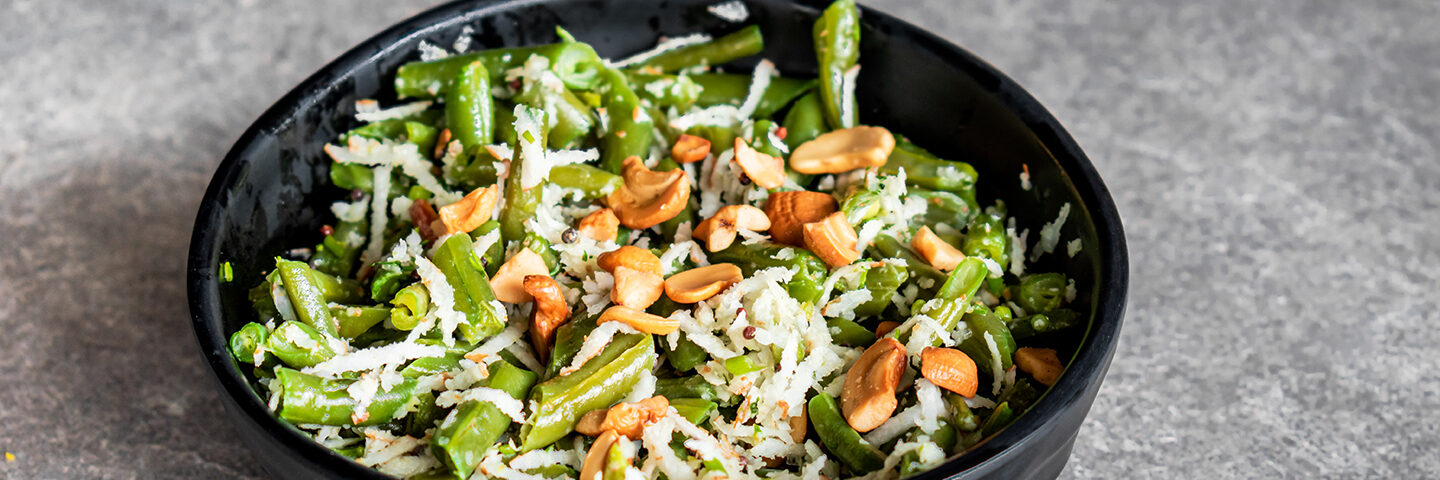
Fruit & Veggie Power Couples
Synergy. The mother of corporate jargon. Don’t worry, this isn’t a corporate retreat or board meeting. This is about everyone’s favorite topic – food! And food has synergistic qualities. All the food we eat provides us with a unique collection of different nutrients with various benefits. Often the greatest benefit comes from combining certain foods.
These food pairings or power couples come together to boost the nutrient absorption and function in the body. We often see power couples in traditional recipes from cultures around the world. It gets even better as these power couples up the flavor and make our meals and snacks more satisfying.
Fruit & Iron
Iron is key for transporting oxygen around the body, growth, development, and more. This mineral is often a concern for those who are pregnant, experiencing iron deficiency anemia or feeding growing children. While there are a variety of dietary iron sources, animal-based foods are considered more bioavailable. That does not mean we should discount plant-based iron. Pairing plant-based iron sources with foods rich in vitamin C helps with iron absorption and enhances iron’s bioavailability. Plant-based iron sources include certain nuts, seeds, seaweed, beans, leafy greens, dried fruits, fortified foods and more.
Try adding fruit and nuts to mixed greens for a delicious salad. For a light meal or hearty side, make a lentil salad with tomatoes and lemon vinaigrette. Seaweed is often particularly rich is iron, and pairs with vitamin C rich red peppers in this sesame seaweed salad. Finally, keep things simple by topping iron fortified cereal with vitamin C rich berries.
Calcium & Vitamin D
Calcium and vitamin D are a well-known bone building power pairing. Calcium is also involved in heart, muscle and nerve function, blood clotting and more. Vitamin D has many other functions in the body that we are learning more about, such as immune support, cell growth, glucose metabolism. It also provides an important role in helping the body absorb calcium.
Calcium is found in dairy, certain leafy greens, some canned fish and many soy products. While there are few dietary sources of vitamin D, such as certain fish like sardines and salmon, many foods like dairy, plant milk and orange juice are fortified with vitamin D. Some UV treated mushrooms may also be a good vitamin D source. Consider pairing these mushrooms with bok choy in a tofu stir-fry for a plant-based bone-building meal. Fortunately, this partnership is well documented and many foods that are fortified with Vitamin D also have calcium and vice versa. Just be sure to read the label to confirm.
Vitamin E & C
This power couple seems to come up as much for skin care as it does nutrition. Our skin functions as the primary barrier to the outside world and all the pollutants, free radicals, and other oxidative stressors in the environment. It’s easy to see how our largest organ would need the help of this antioxidant power couple.
Vitamin E’s primary function is as an antioxidant. It has the ability to neutralize free radicals but relies on vitamin C in the process. As these free radicals can impact more than our skin, pairing vitamins C and E is also important to our diet. Vitamin C rich fruit like apples pair wonderfully with Vitamin E rich peanut butter. Just try not to get too much on your face.
Fat & Fat Soluble Vitamins
Vitamins A, D, E and K are considered fat soluble which means they need fat to be absorbed, transported and stored by the body. These vitamins all have important functions in the body including immune function, growth, development, wound healing and more.
Ensure that you get as much from vitamins A, D, E and K rich foods with some power pairings. Top vitamin A and K rich leafy greens with a drizzle of heart healthy olive oil. Add your favorite vitamin D fortified plant milk and avocado slices to your morning smoothie bowl. The avocado does double duty with healthy fats and vitamin E. They also provide satisfying creamy texture to boot.
Probiotics & Prebiotics
Probiotics are often seen as this super hero of the nutrition world. They support gut function, provide immune support, and we keep learning more. While these benefits are numerous, probiotics have a sidekick of sorts – prebiotics. Prebiotics are dietary fibers that feed the probiotics in our gut. As you can imagine, for us to get the most benefit from our probiotics, we would need prebiotics.
Probiotics are found in many fermented foods like yogurt, kefir, kombucha, sauerkraut, miso and more. Prebiotics are found in many fiber rich foods like whole grains, fruits and vegetables. Show those helpful gut bacteria some love with this Black Rice Salad With Miso Dressing.
While these power couples taste delicious and support our overall health and wellness, these power couples are just the tip of the iceberg. There are so many more. Many of which are still being researched. A varied diet that is rich in colorful fruits, vegetables and whole grains along with lean protein and dairy is key. This variety ensures that our diets are rich in not just these power couples, but also any other nutrients or nutrient combos we may need.


